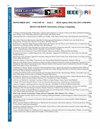一组股票异质数据整合的巴西股市预测
IF 1.3
4区 工程技术
Q3 COMPUTER SCIENCE, INFORMATION SYSTEMS
引用次数: 0
摘要
巴西股市的显著增长,加上投资者对高风险资产的投资增加,产生了对自动预测工具的需求。本研究通过整合历史价格序列和从X旧Twitter消息和谷歌news收集的新闻中提取的情绪文本数据,调查了巴西市场股票的行为和运动。该分析使用自然语言处理技术进行情感分析,实现了数字和文本信息之间的有效融合。对资产PETR4、VALE3、BBDC4和ITUB4进行实验,应用长短期记忆、深度神经网络和线性回归模型预测这些资产的行为。结果表明,LSTM模型,尤其是模型2的预测能力最好,RMSE最小值为0.0171,决定系数最高值为0.9707 ~ 0.9873。该研究的结论是,将数字和文本数据结合深度学习技术,为股市预测提供了一种有前途的方法,提高了预测收益。本文章由计算机程序翻译,如有差异,请以英文原文为准。
Brazilian Stock Market Forecast with Heterogeneous Data Integration for a Set of Stocks
The significant growth of the Brazilian stock market, coupled with the increase in investors in riskier assets, has generated a demand for automated forecasting tools. This research investigated the behavior and movement of stocks in the Brazilian market by integrating historical price series and textual data extracted from sentiments in X old Twitter messages and news collected from Google News. The analysis used natural language processing techniques for sentiment analysis, enabling an efficient fusion between numerical and textual information. Experiments were carried out with the assets PETR4, VALE3, BBDC4, and ITUB4, applying the Long Short Term Memory, Deep Neural Network, and Linear Regression models to predict the behavior of these assets. The results indicated that the LSTM models, especially Model 2, presented the best performance in terms of predictive capacity, with the lowest values of RMSE 0.0171 and high values of coefficint of determination ranging from 0.9707 to 0.9873. The study concludes that integrating numerical and textual data, combined with deep learning techniques, offers a promising approach to stock market forecasting, increasing forecasting gains.
求助全文
通过发布文献求助,成功后即可免费获取论文全文。
去求助
来源期刊

IEEE Latin America Transactions
COMPUTER SCIENCE, INFORMATION SYSTEMS-ENGINEERING, ELECTRICAL & ELECTRONIC
CiteScore
3.50
自引率
7.70%
发文量
192
审稿时长
3-8 weeks
期刊介绍:
IEEE Latin America Transactions (IEEE LATAM) is an interdisciplinary journal focused on the dissemination of original and quality research papers / review articles in Spanish and Portuguese of emerging topics in three main areas: Computing, Electric Energy and Electronics. Some of the sub-areas of the journal are, but not limited to: Automatic control, communications, instrumentation, artificial intelligence, power and industrial electronics, fault diagnosis and detection, transportation electrification, internet of things, electrical machines, circuits and systems, biomedicine and biomedical / haptic applications, secure communications, robotics, sensors and actuators, computer networks, smart grids, among others.
 求助内容:
求助内容: 应助结果提醒方式:
应助结果提醒方式:


